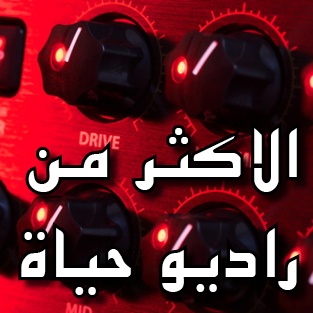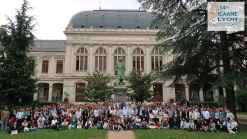News
The discovery - evidence of Roman-period burial culture and belief in the afterlife, is published for the first time in the IAA’s 'Atiqot Journal #117. “The decorative ornate discs graced, apparently, coffin carrying handles, and attest to the high status of the deceased.”
A singular discovery - four rare bronze discs, designed in the form of lion heads, about 1,900 years old and dated to the Roman era – the 1st-2nd centuries CE – were just published for the first time in the official IAA journal 'Atiqot, No. 117. These ornamental discs were probably intended to enhance carrying handles for a coffin. Found in a 2018 salvage excavation at the Eyal interchange in the Sharon region, conducted by the IAA in Khirbat Ibreika – they were lying in an orderly pile inside a grave, seemingly where once a wooden coffin stood – which was not preserved.
According to Excavation Managers Dr. Elie Haddad and Elisheva Zwiebel, directors of the excavation on behalf of the IAA who authored this article, “This is a unique and rare set of finds: the carrying handle ring, which was attached — in most of the known examples from the Roman world, through the lion's mouth — was joined in this case precisely to the disc’s vertex, at the top of the lion’s head. It seems this enabled freer and wider movement of the handles that served to lift the coffin and integrate it into a burial procession, while passing bars through the rings to better handle its transport.”
The unearthed lion heads are not identical to each other. Each face has a different expression, and each bears a different design of mane, eyes and nose. “Similar discs were discovered in several other places in Israel, such as in Netanya and Tel Dor - most of them found in a distinct burial context,” say the researchers.
This discovery raises questions about the deceased’s identity and his ethnic and religious affiliation. “Tracing the lion as symbol in the ancient world reveals that in many cultures it represented strength, protection and nobility,“ say Dr. Haddad and Zwiebel. “At this stage we do not have enough evidence to associate the lions to a particular religion.
However – the reasonable assumption is that here we have a pagan burial. In any case, these fancy, elaborate discs clearly reflect this individual’s high status.”
One of the lion heads uncovered at the Eyal Interchange. Photo: Dafna Gazit, IAA.
 الاكثر من راديو حياة
الاكثر من راديو حياة
 مشكلة البترول في بيت لحم - 20-6- 25
مشكلة البترول في بيت لحم - 20-6- 25
 جامعة دار الكلمة تشارك في الموتمر العالمي الرابع عشر بخصوص آثار وتاريخ الشرق الأوسط القديم في فرنسا
جامعة دار الكلمة تشارك في الموتمر العالمي الرابع عشر بخصوص آثار وتاريخ الشرق الأوسط القديم في فرنسا
 جامعة دار الكلمة تناقش أول رسالة ماجستير في برنامج العلاج بالفنون
جامعة دار الكلمة تناقش أول رسالة ماجستير في برنامج العلاج بالفنون